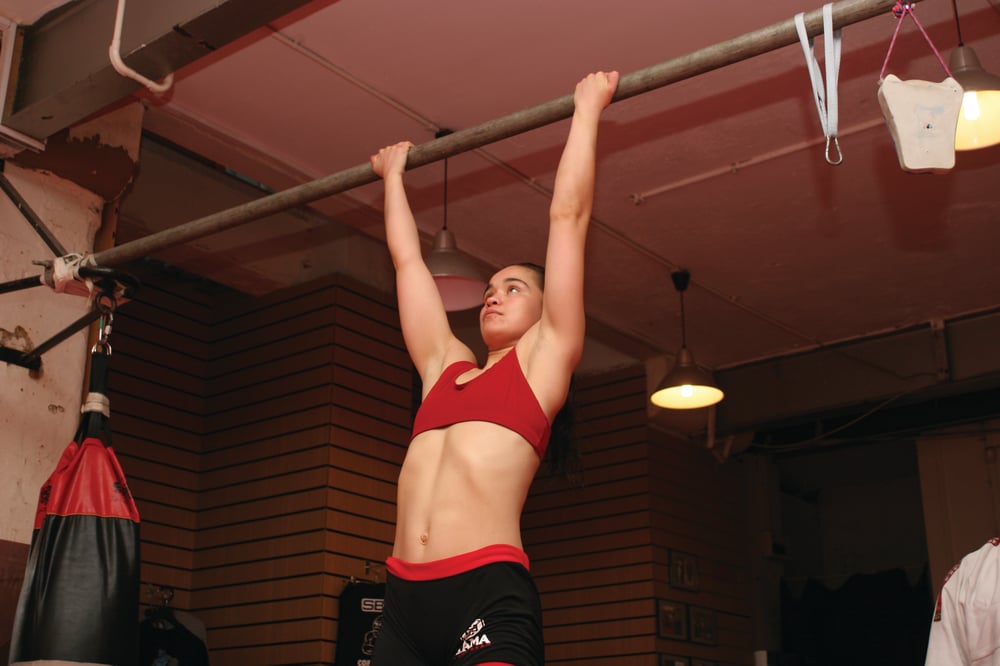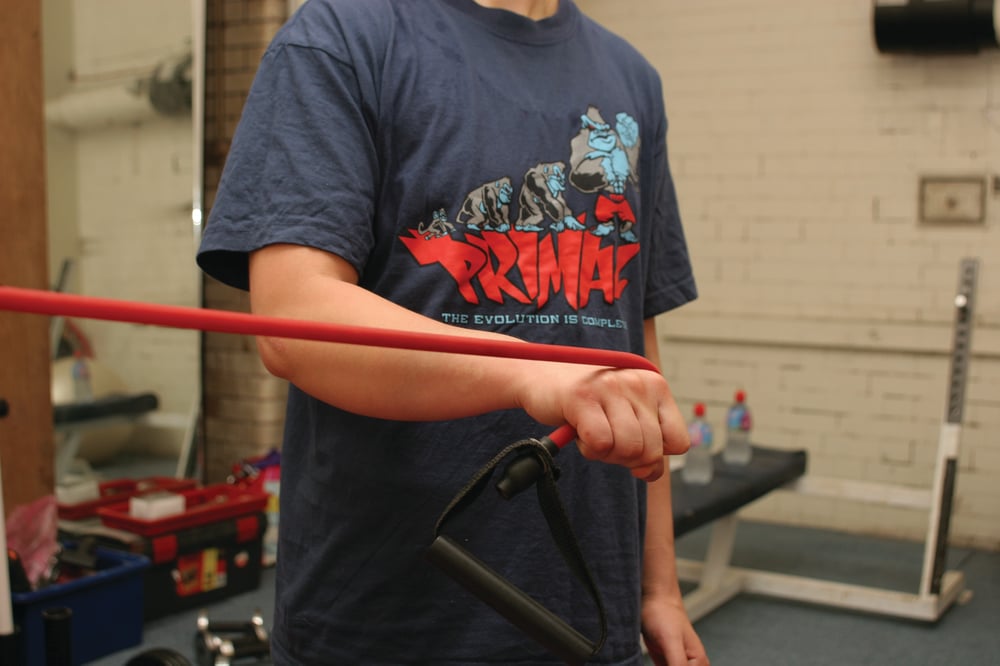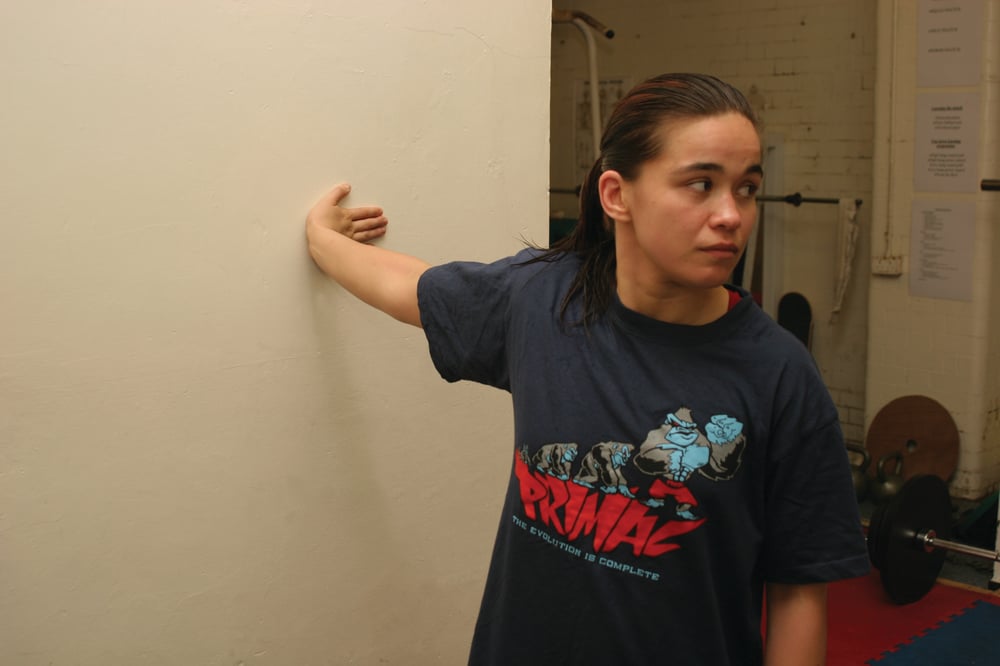
Issue 042
October 2008
Elbows are a common area of complaint among mixed martial artists. Due to the unique stresses we put on the joint, the types of injury we face tend to be different from those of other sports. As always, if you are suffering from an existing injury then you should consult a doctor, physiotherapist, osteopath or other qualified sports injury specialist before trying these exercises. If you get any pain while doing the exercises, then stop immediately and seek professional advice.
In submission grappling, the elbow is perhaps the most frequently attacked joint in the body. Armbars attack it directly, and it may also be put under pressure in keylocks or kimuras. These locks may cause damage to the ligaments surrounding the joint, to the bones themselves, or to the joint surfaces, leading to irritation and inflammation. Striking can also damage the elbow in a similar way, as anyone who has had the experience of missing a target with an over-committed punch will know.
Tendon inflammation and damage around the elbow is common in many sports, and MMA is no exception. Overusing the muscles of the wrist and forearm can lead to ‘tennis elbow’ or ‘golfer’s elbow’ as small tears and damage build up over time.
It is important to remember that pain around the elbow may be coming from somewhere else in the body. Problems at the shoulder often cause elbow pain, and the wrist and the mid-back are other areas that should be considered. If you have a
long standing elbow problem, then it is well worth consulting a physiotherapist or osteopath to see whether it might be the result of an injury or imbalance elsewhere.
Most reliable ways to protect your elbow from an enthusiastically applied armbar are to improve your defence so that you can stay out of the lock in the first place and, if caught in it, to tap early. This is all very well in training, but many injuries happen in competition where competitors, by their nature, are reluctant to submit when a win is at stake. Regardless of how strong you are, bicep curling your way out of an armbar is never a good game plan. However, working the elbow flexors - biceps, brachialis and brachoradialis being the major ones - in the very outermost range can allow you to take the pressure off the elbow and hold it briefly ‘off lock’, which gives you just a little more wriggle room to work your escapes.
Outer-range pull ups
This exercise is a specific addition to your regular strength training work. It is also important to work the flexor muscles through their full range of motion - and if you are not doing this already, then that is a higher priority.
The idea here is to work the first few degrees of elbow flexion. Because you are only working a small portion of the range, you can add more weight than you would for an ordinary pull up. You can either do this using a weighted belt, or by doing the pull ups with a single arm, or both. It is important to start each rep with the elbow and shoulder at full extension.
Hang from the chin-up bar. Take a fairly wide grip with your palms facing towards you.
Pull up until your elbows are bent to around 20 degrees. Hold the position for five to ten seconds, then slowly lower to full extension.
Resisted pronation
Many people think of the elbow as a simple hinge joint, with the main movements being flexion and extension. In fact, it is a complex of three different joints. This allows two extra movements - pronation and supination. Keep your elbows in towards your body and turn your palms upwards - this is supination. Turning the palms down is pronation. Supination is a stronger movement than pronation. It is mostly done by your biceps, which usually get no shortage of exercise. The muscles that produce pronation, on the other hand, are smaller and more often neglected. Giving them some attention may improve the muscle balance around the elbow and allow it to move more smoothly.
Hold your elbow close to your body. Do not allow it to move during the exercise. With your palm facing upwards, hold the end of a rubber band that is attached to a solid frame, door handle or training partner. You can adjust the amount of tension in the band by moving closer or further away from the attachment point.
Keeping hold of the band, slowly turn the palm downwards. Slowly return to the start position. Repeat for three sets of ten repetitions on each arm.
Forearm flexor and bicep stretch
The forearm muscles get a hard time with all the gripping and pulling that we do, and often we don’t stretch them as regularly as we should. A lack of flexibility here can affect both the wrist and the elbow, so a few minutes of stretching at the end of a training session can be a worthwhile investment.
Place your hand flat against a wall at shoulder height with the arm horizontal. Turn the body away, so that you feel a stretch in the bicep and the forearm muscles. Hold the stretch for 30 seconds and repeat twice on each arm.
...














